What Does Woodworm Look Like?
‘Woodworm’ is not a single type of insect, but rather refers to a number of insect species that all possess the same quality: their larvae eats away at timber. Woodworm larvae is incredibly difficult to spot on their own, but could very well be hiding in the timber of your home. The effects of a woodworm can be extremely problematic, so look out for the following signs of woodworm in your property.
Small, round holes
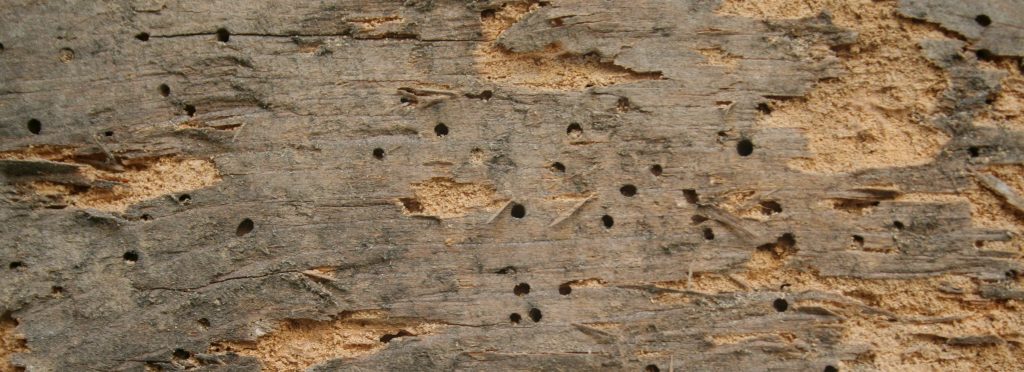
When the larvae grow and become adult beetles, they decide to exit the wood and find a mate. The beetles bore small, visible exit holes to escape. If you notice these small holes, approximately 2mm in diameter, this could indicate an infestation.
Beetles
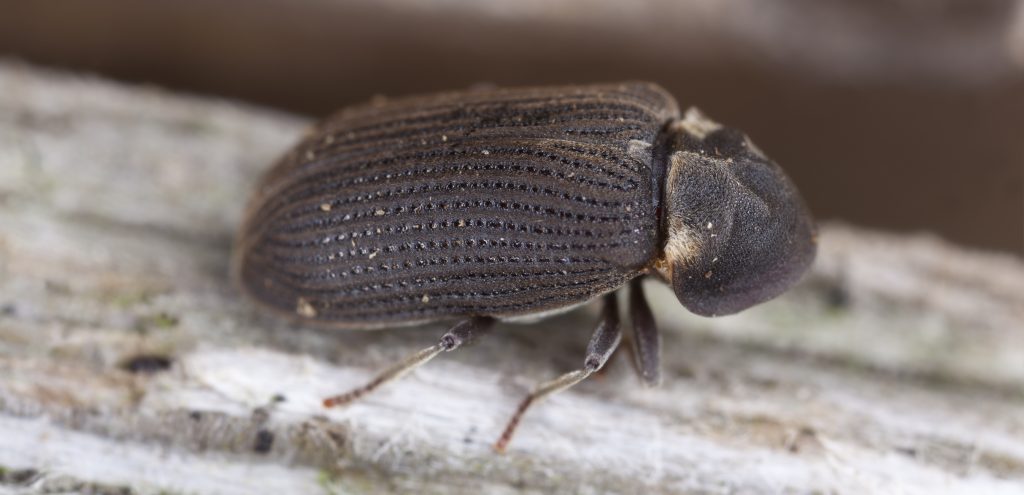
You may find beetles around your home that have escaped from the timber but haven’t yet exited the property. A single beetle, especially with no other visual evidence, may have just made its way into your home from outside, but if you start to notice multiple beetles around your property, it may be time to call in an expert to investigate. Some beetles die before they make it out of the property, so you need to be just as cautious, regardless of whether the beetle is dead or alive.
Powdery dust
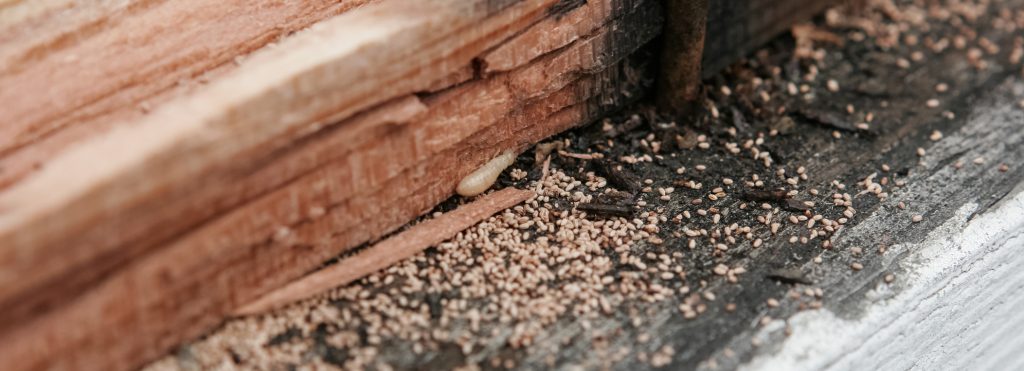
Known as ‘frass’, woodworm excrete a fine dust that is often a strong indication of a woodworm infestation. Frass can be found around old furniture and various other areas of the property, but is most commonly seen directly around the exit holes on your timber. This is largely because frass also refers to the excess dust produced directly from the bored holes.
Weak timber or flooring
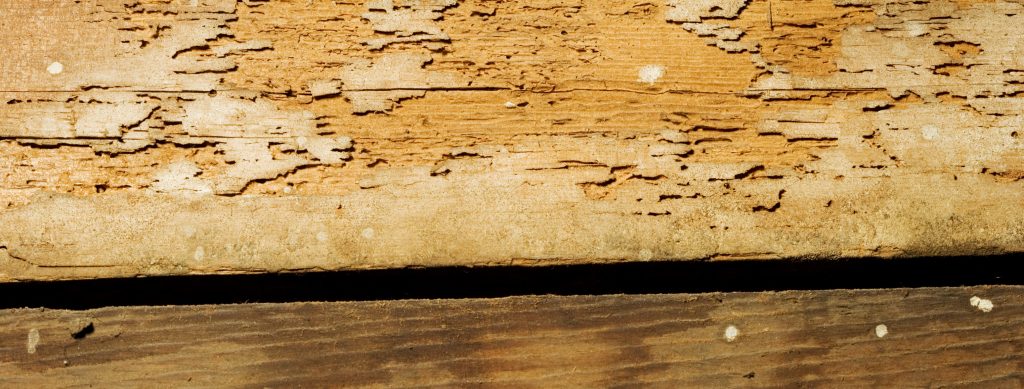
If you notice sudden structural imbalances to the timber frames or flooring around your home, it could be a result of a woodworm infestation. Woodworm eats away at your timber, and a structural issue could signify a severe infestation. There are other reasons why your timber might have weakened, but it is definitely worth getting a professional to investigate.
Crumbly edges to board and joists

The damage done to your timber may not only be felt, but also seen. Crumbling edges of your timber indicate a possible infestation that have done enough damage to cause crumbling around the edges. If not addressed, this could lead to dangerous structural imbalances.
Tunnels within the timber
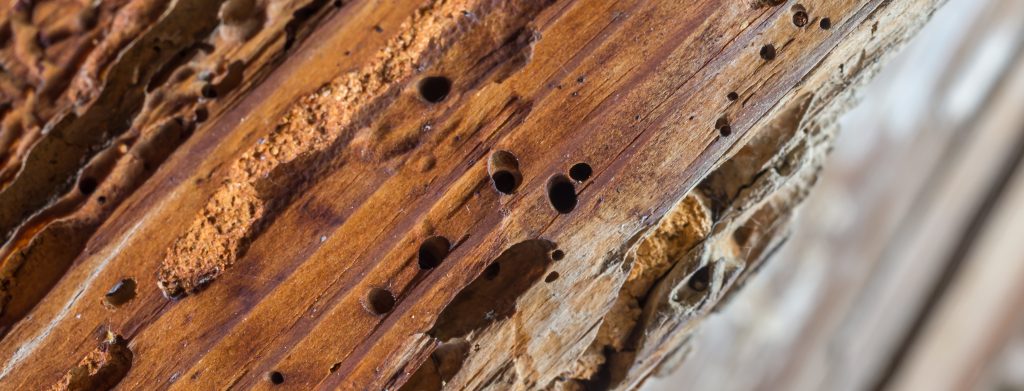
Exit holes are the most obvious sign of woodworm, as they’re visible on the wood’s surface. However, if you were to cut open the wood, you may also be able to spot inner tunnels. These are the resulting passages of larvae burrowing through the timber’s core. We don’t recommend cutting open your timber though. If you have any concerns about woodworm on your property, call the professionals to investigate the issue further.
If you notice any of the signs listed above, your property may be suffering from a woodworm infestation. Quadrant Damp Proofing offer a comprehensive woodworm treatment service to customers throughout North and West London — including Ealing and Harrow. Our experts have years of experience in the industry and will thoroughly investigate your property to identify the scale and severity of an infestation. Then, they’ll use their expertise to enact an eradication method that is best suited to your specific circumstances. No matter which methods we use, all of the chemicals and materials we have at our disposal conform with British Standards and have passed HSE tests. If you’d like to enquire further, give our team a call today.





